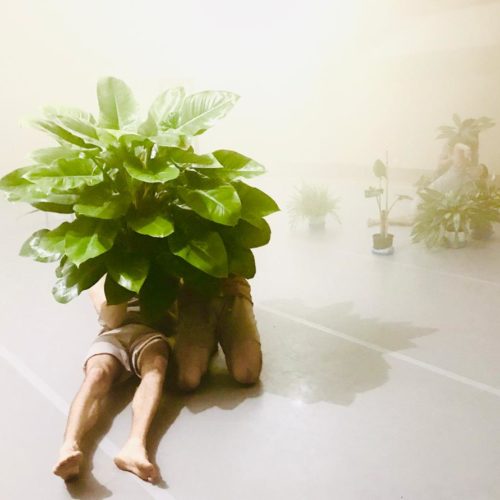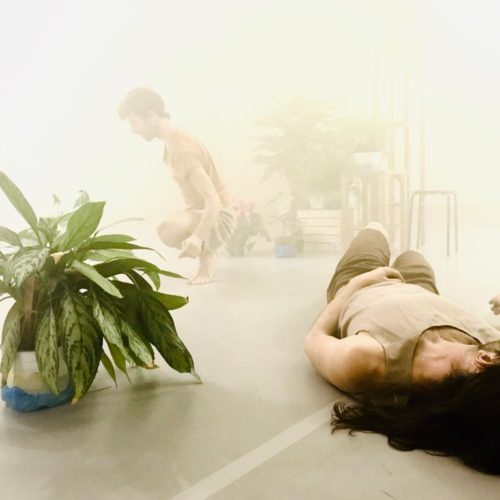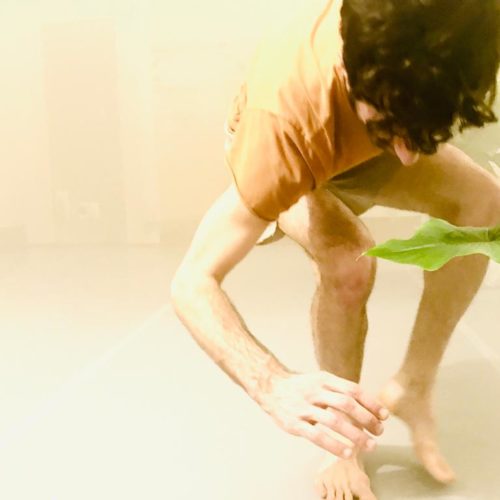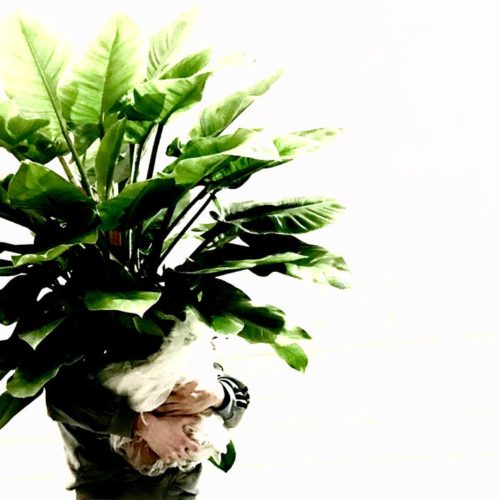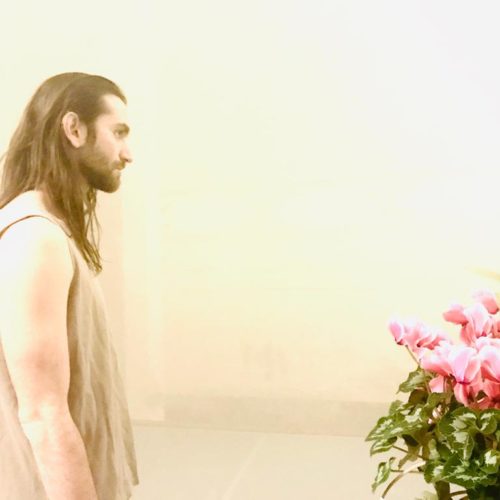Paradiso
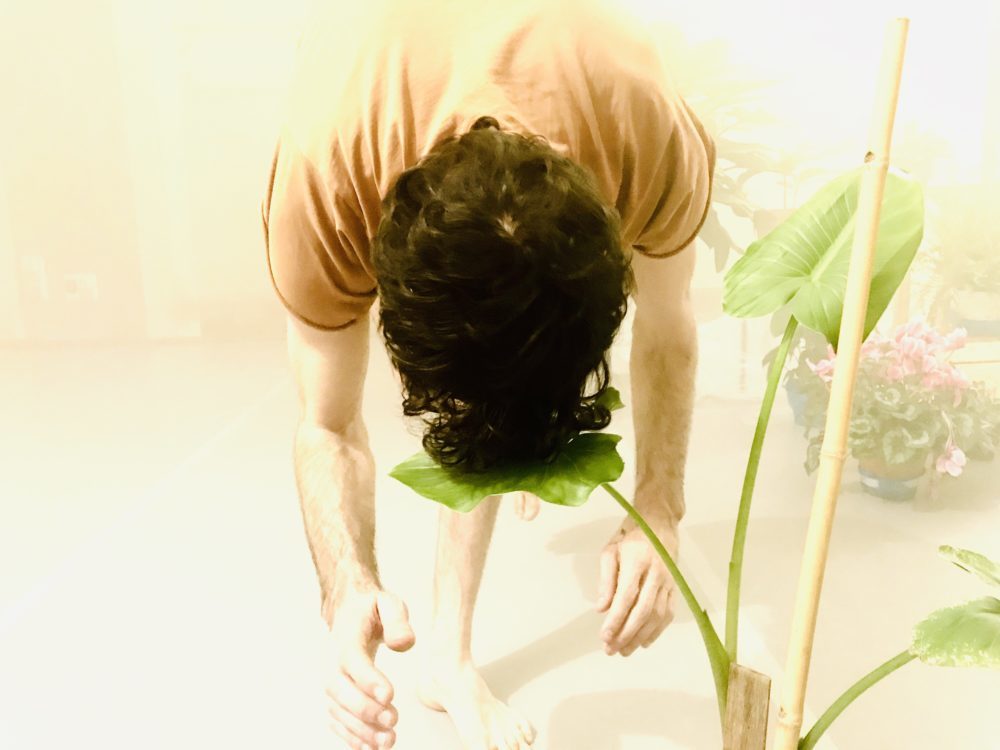
CREDITS
Regia, coreografia e spazio Virgilio Sieni
Interpreti Jari Boldrini, Nicola Cisternino, Maurizio Giunti, Andrea Palumbo, Giulio Petrucci
Musiche Salvatore Sciarrino
Costumi Silvia Salvaggio
Luci Virgilio Sieni e Marco Cassini
Allestimento Daniele Ferro
Produzione Comune di Firenze, Dante 2021 Comitato Nazionale per le celebrazioni dei 700 anni, Campania Teatro Festival
Collaborazione alla produzione Fondazione Teatro Amilcare Ponchielli – Cremona
La Compagnia è sostenuta da Ministero della Cultura, Regione Toscana e Comune di Firenze
SCHEDA
PARADISO
Il Paradiso di Dante ricompone il corpo secondo una lontananza che è propria dell’aura, un luogo definito dal movimento, da ciò che è mutevole. Un viaggio che si conclude nello spazio senza tempo della felicità.
Il cammino di Dante non è assimilabile a niente, pura invenzione di una lingua inappropriabile che si trasforma in molecole di dialetto e oralità, gesto sospeso e luccicanze improvvise.
Dante non è un flâneur, viaggiatore della notte alla ricerca di se stesso nelle pieghe infernali della città; né un wanderer, viandante immerso negli abissi della malinconia e letteralmente risucchiato dai paesaggi emozionali; né un passeggiatore scanzonato, come ci indica divinamente Petrarca, cioè un camminatore che tiene lontani i pensieri invadenti e si sospende nell’ “errabondare tra le valli”. È un cammino dall’umano al divino, dal tempo all’eterno. Lo spettacolo è la costruzione di un giardino e non riporta la parola della Divina Commedia, non cerca di tradurre il testo in movimento ma si pone sulla soglia di una sospensione, cerca di raccogliere la tenuità del contatto e il gesto primordiale, liberatorio e vertiginoso dell’amore. Danza dialettale che si forma per vicinanze e tattilità.
La prima parte presenta la costruzione di un giardino fisico di gesti. Quintetto fisico che traccia il suolo di passi intesi come piantumazioni di un giardino immaginario. La coreografia è costruita per endecasillabi di movimenti dove i versi della danza ritrovano il risuonare della rima da una terzina all’altra. Questo continuo manipolare, accarezzare e pressare lo spazio invisibile intorno ai corpi edifica un continuum di terzine sillabiche del gesto: una maniera umile per porsi nei confronti della loro magnificenza geometrica, matematica e cosmica. Allo stesso tempo il gesto scaturisce da una ricerca sullo spazio tattile e sull’aura della persona. La coreografia immagina e materializza corpi fuori dal corpo, ripercorrendo le nodature e le striature muscolari, facendo emergere un contesto dove le piante riflettono la loro presenza in emanazione luminosa. I danzatori creano un gioco di vicinanze e di prossimità, stabilendo una nuova forma di contatto, dove il tocco non tange la pelle ma lo spazio auratico dei corpi.
Nella seconda parte tutto avviene cercando nel respiro delle piante la misura per costruire un giardino quale traccia e memoria dei gesti che lo hanno appena attraversato. La vicinanza con la natura ci immerge in un limite che sembra un gioco ritrovato: sono loro, le piante, a scegliere e a determinare i gesti, le misure, le ombreggiature, le sparizioni. È il loro modo di accarezzarci che smuove i corpi secondo incontri e traiettorie che richiedono sempre solidarietà; la loro esistenza accoglie e fa esistere i nostri movimenti. La coreografia è costruita portando, sollevando e depositando le piante nello spazio. Questo passeggiare insieme a loro, sentirne chiaramente il peso e il volume, ci ha istruito sul senso della lentezza e dello scorrimento: canali gestuali e “amorosi”. In questo contesto di relazione e convivenza, la danza assume l’aspetto di un respiro che organicamente ritrova un contatto diretto con la tenuità delle foglie e il loro riferirsi costantemente alla luce, accudendola. Le piante, la cosa alta, restituiscono il vero senso della danza, la lingua penultima: dialettale e popolare, in grado di mettere in dialogo le persone secondo declinazioni astratte, simboliche, inventate e immediatamente inscritte nella memoria.
Dante’s Paradiso re-composes the body in terms of a distance that pertains to the aura, a place defined by movement, by something in the process of changing. A journey that ends in the timeless space of happiness.
The performance does not recite the words of Dante’s Divina Commedia, nor does it try to translate the text into movement, but represents the threshold of a suspension, and aims to capture the primordial, liberating, dizzying gesture of love. We seek to create a dialectical dance that takes shape via nearness and invention of movements through contact and tactility.
The performance is the construction of a garden. Everything takes place in the context of seeking, in the respiration of plants, the means to construct a garden in which to deposit the memory of dance.
The space of this garden is characterized by humidity and wind, two vital elements which, evaporating, traverse and influence the choreography. What remains in the end is a garden as a vestige of the choreography and a flowering of past gestures. In this sense, the plants, the high things, express the true sense of dance, the lowest language.
The choreography is constructed in hendecasyllables of gestures, where the verses of the dance pick up the resonance of the rhyme from one tercet to the next, from the middle line to the first and third lines that comprise it.
The form of the hendecasyllable is picked up by the movement to construct sequences inscribed in that measure.
Dante’s journey, after all, is incomparable to anything else: he is not a flâneur, a traveler in the night trying to find himself in the infernal folds of the city; nor is he a wanderer plunged into the abyss of melancholy and
literally sucked down into emotional landscapes; an easygoing walker, as Petrarch divinely suggests, that is, a walker who keeps invasive thoughts at bay and remains suspended in his “wandering through the valleys”. His is a journey from the human to the divine, from time to eternity.
Nearness to nature plunges us into a boundary zone that seems a sort of rediscovered game: they, the plants, choose and determine the gestures, measures, shadows and disappearances; it’s the way they caress us that moves our bodies along trajectories that always require solidarity. Their existence welcomes our movements, and makes them exist. In this context of relating to and cohabiting with plants, dance takes on the aspect of a respiration that organically finds direct contact with the tenuousness of leaves and the way they constantly look to the light, nurturing it.
The plants, accompanied in the space, determine the choreographic variations, giving birth to the trajectories of gestures and encounters. The choreography is constructed through carrying, lifting, supporting, suspending, shifting and depositing the plants in the space. Walking with them, fully feeling their weight and volume, taught us something about the sense of slowness and flow: gestural and “loving” conduits to the suspension of movement. In waiting, spaces of nearness open up, and we see the relation between our respiration and their process of dependence on light. The dancers create a game based on nearness and proximity, establishing a new form of contact, in which touch does not mean touching skin, but rather the auratic space around bodies. This continuous manipulation, caressing and pressing of the invisible space around bodies constructs a continuum of syllabic tercets of the gesture: a humble demeanor in the face of their geometric, mathematical and cosmic magnificence. At the same time, this way of dealing with the gesture triggers an exploration of the tactile space and the aura of the person who is set in action: imagining and materializing bodies outside the body, going over the nodes and striations of muscles, they bring forth an auratic context in which plants reflect their presence in luminous emanation.
TOURNÉE
Napoli, Campania Teatro Festival, Teatro Politeama, 25, 26 settembre 2021 – prima assoluta
Pesaro, Teatro Sperimentale, Pesaro, 13 ottobre 2021
Ferrara, Teatro Comunale, 23 ottobre 2021
Firenze, Cango Cantieri Goldonetta, dal 6 al 14 novembre 2021
Reggio Emilia, Festival Aperto, Teatro Ariosto, 20 novembre 2021
Pistoia, Teatro Manzoni, 24 novembre 2021
Cremona, Teatro Ponchielli, 27 novembre 2021
Milano, Triennale, 1, 2 dicembre 2021
Pavia, Teatro Fraschini, 4 dicembre 2021
Genova, Teatro Nazionale, 7 dicembre 2021
Verona, Teatro Camploy, 17 dicembre 2021
Padova, Teatro Verdi, 20 febbraio 2022
Pisa, Teatro Verdi, 10 marzo 2022
Arezzo, Teatro Petrarca, 12 marzo 2022
Treviso, Teatro Del Monaco, 31 maggio 2022
